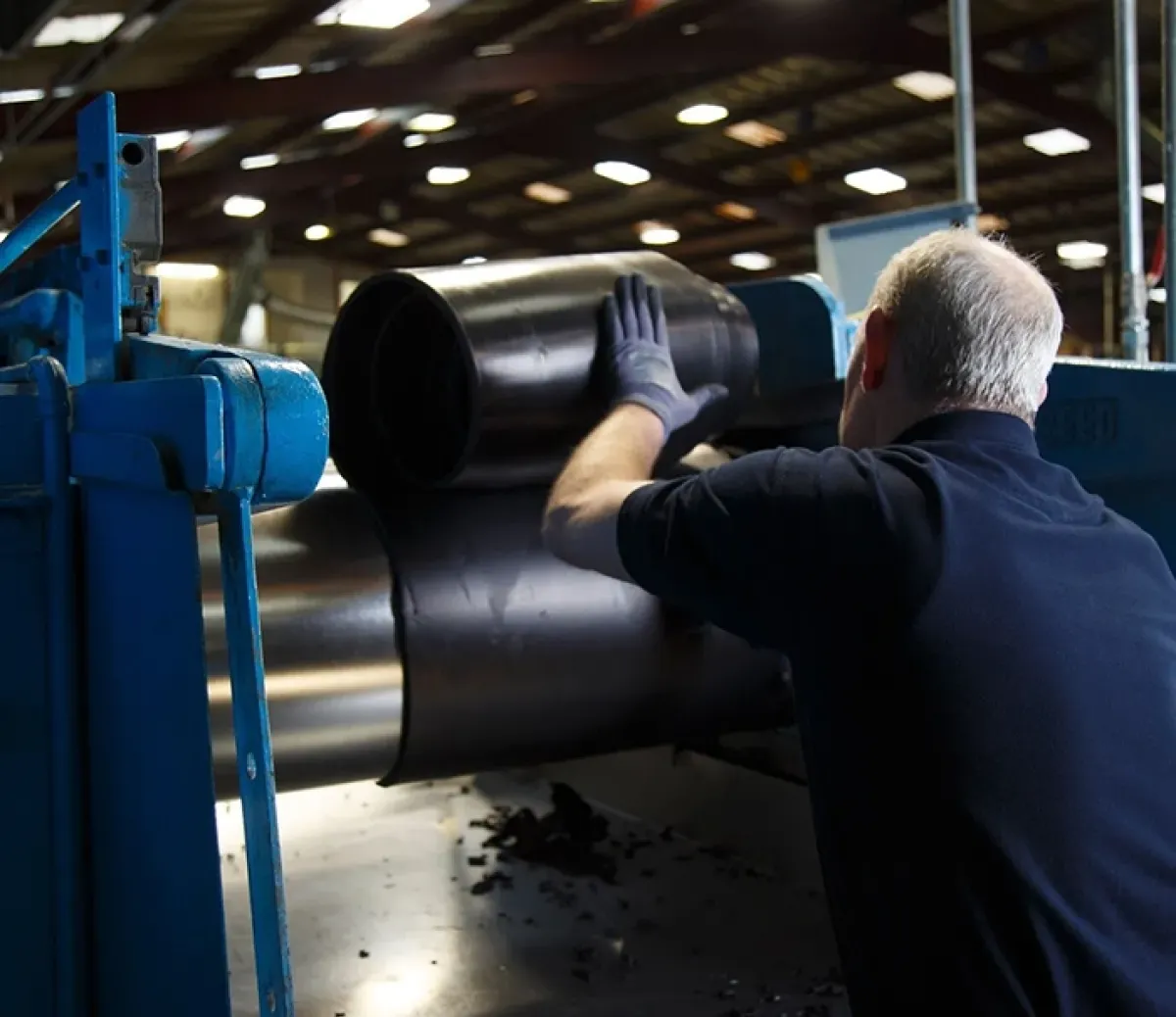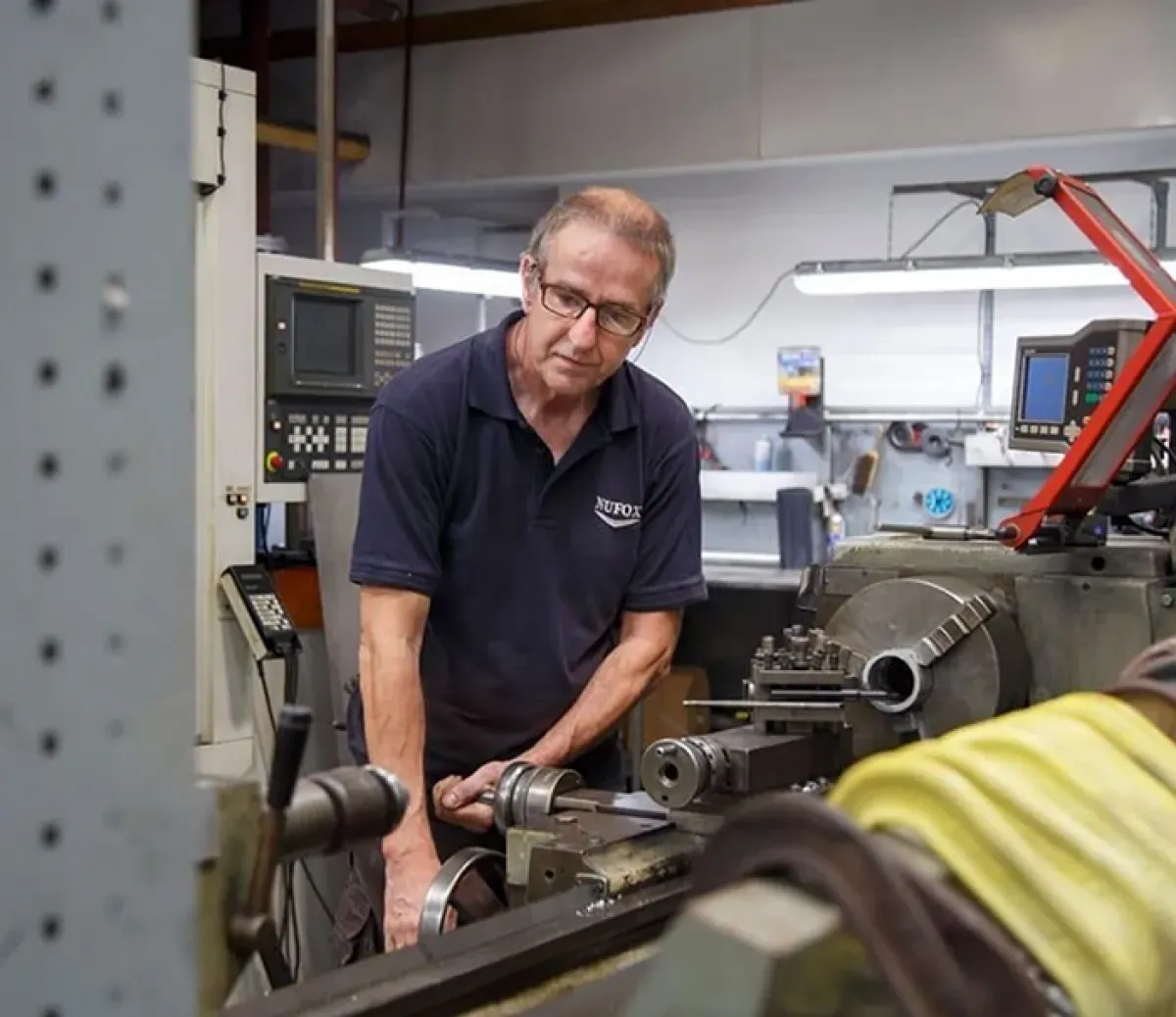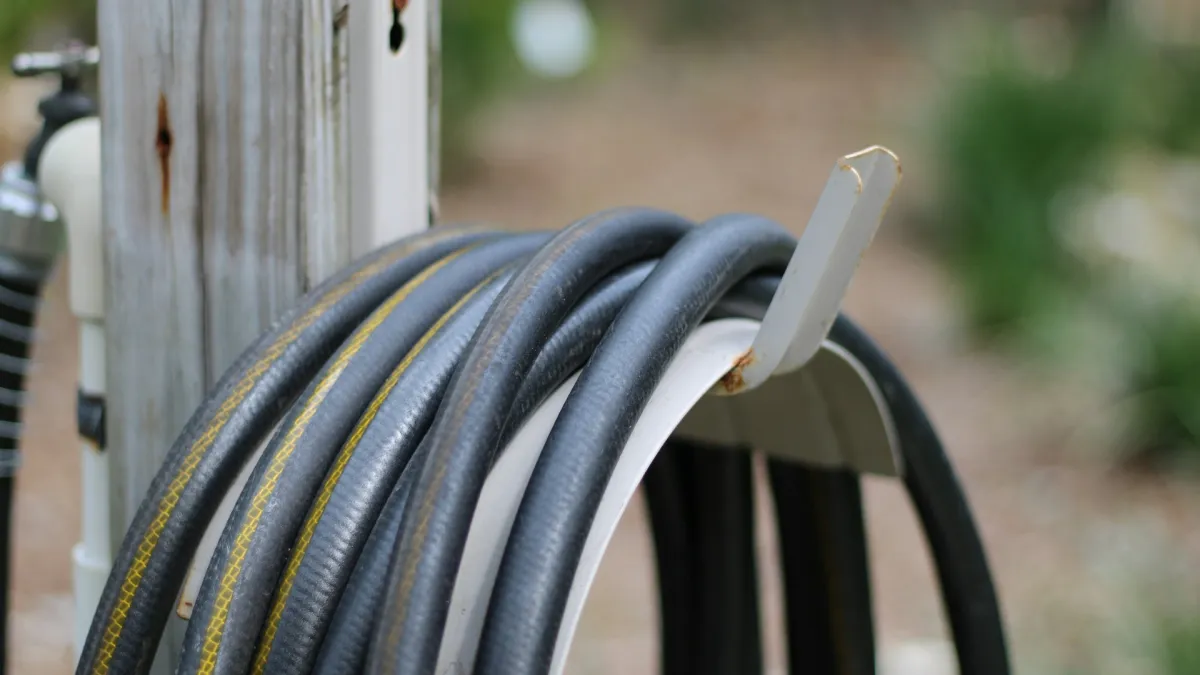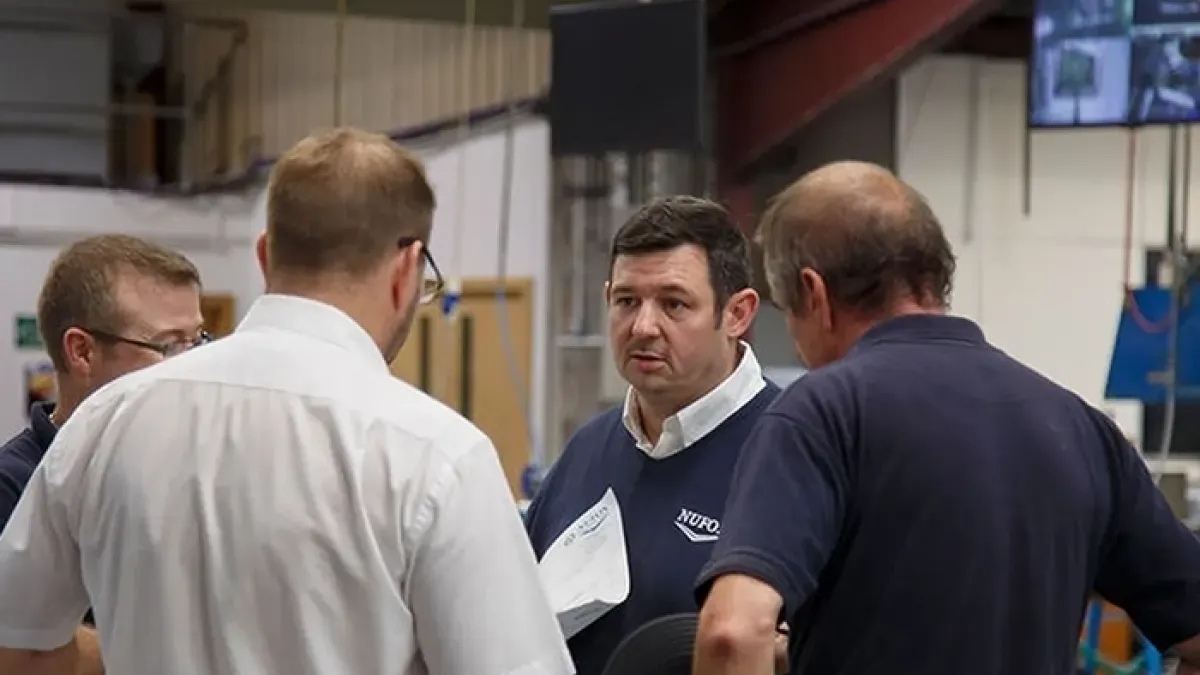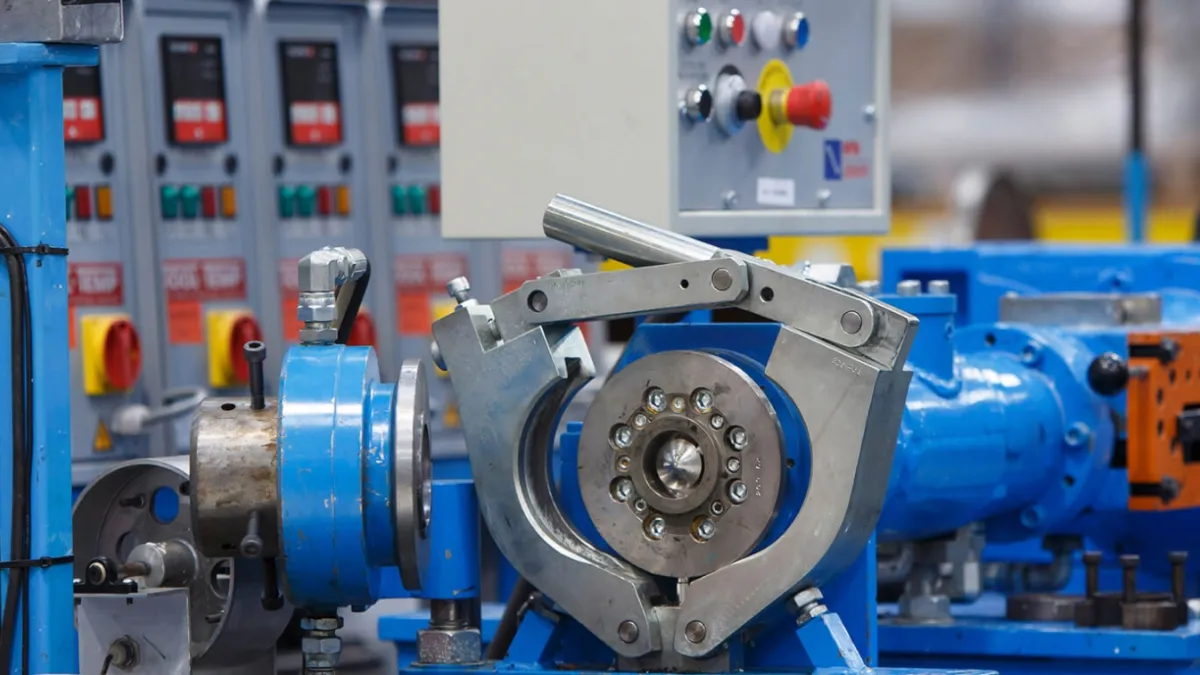By using this website, you agree to our Privacy Policy
×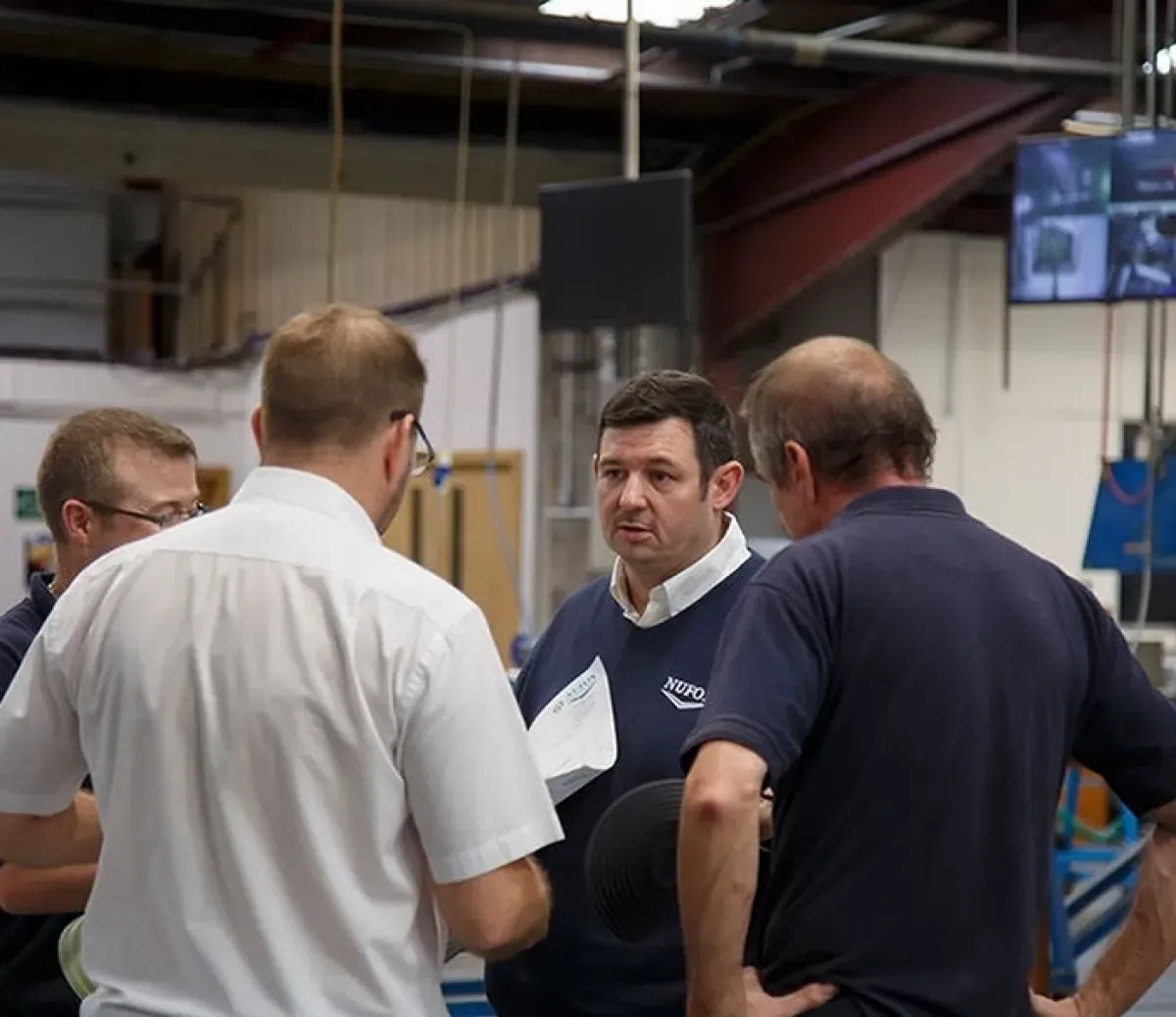
EPDM Rubber Extrusions: Weather Resistance and Durability
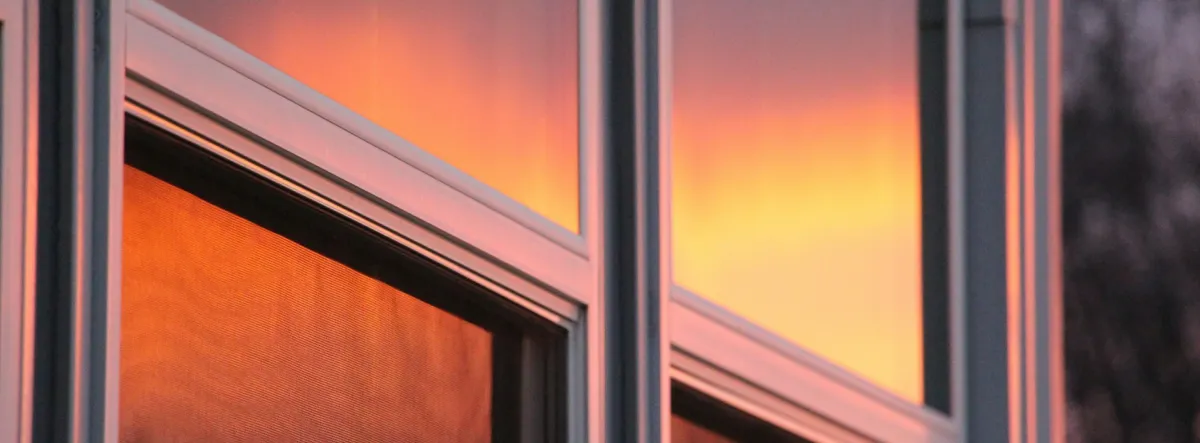
EPDM rubber extrusions are known for their exceptional weather resistance and durability. Made from ethylene, propylene, and a diene monomer, EPDM offers superior resistance to UV radiation, ozone, and extreme temperatures, making it the best choice for outdoor applications in various industries, including automotive, construction, and renewable energy. In this article, we dive into EPDM rubber extrusion and how it’s different to other types of extrusion.
Properties of EPDM Rubber Extrusions
EPDM rubber is a synthetic rubber made from ethylene, propylene, and a diene monomer, this is where it gets its name from.
Ethylene: A colourless gas used as a primary monomer in EPDM rubber production, contributing to the polymer's backbone and providing stability and strength.
Propylene: Another primary monomer in EPDM rubber, propylene enhances the flexibility and durability of the polymer, allowing for better elasticity and resistance to degradation.
Diene Monomer: A secondary monomer in EPDM rubber, the diene monomer introduces unsaturation sites that allow for vulcanisation (cross-linking), improving the rubber's heat and ageing resistance.
EPDM differs from other types of rubber primarily in its superior resistance to weathering, ozone, and UV radiation, making it ideal for outdoor applications. It operates effectively across a wide temperature range (-50°C to +150°C). Unlike natural rubber, EPDM is less susceptible to degradation from environmental exposure. Compared to nitrile rubber, which excels in oil and fuel resistance, EPDM is not suited for such applications but offers better weather resistance. Silicone rubber withstands extreme temperatures but is more expensive. Neoprene provides balanced properties but lacks the same level of UV and ozone resistance as EPDM.
EPDM rubber's longevity can vary significantly depending on its application; for instance, EPDM roofing can last 30–50 years, while liners may have a lifespan of around 20 years. However, prolonged exposure to extreme temperatures can impact its durability, potentially shortening its lifespan in more demanding environments.
Physical Properties |
|
Chemical Properties |
|
Mechanical Properties |
|
Thermal Properties |
|
Grades of EPDM
EPDM rubber comes in a diverse range of grades to suit various applications across industries. Each grade is formulated to specific characteristics, such as strength, flexibility, fire resistance, or chemical compatibility. The over 100 different grades of EPDM are produced by adjusting the ethylene-propylene ratios, impacting the rubber’s elasticity, strength, and suitability for distinct purposes.
Commercial Grade EPDM
Commercial-grade EPDM, also referred to as CQ (Commercial Quality), is a general-purpose variant widely used for applications that do not require high-performance specifications. It is commonly found in roofing membranes, window and door seals, gaskets, and basic weatherstripping. Commercial-grade EPDM often includes blended compounds, which reduce production costs without compromising essential properties like weather and UV resistance. This grade is ideal for moderate environments where basic durability and flexibility are sufficient.
Fire Retardant EPDM
Fire-retardant EPDM is an excellent choice for applications where fire safety is paramount, such as in the mass transport sector. This grade is certified to meet EN45545-2 standard, ensuring low smoke and toxicity levels in the event of a fire. Fire-retardant EPDM is used in enclosed spaces like trains, buses, and aircraft, where stringent safety regulations are in place to protect occupants.
WRAS Approved EPDM
WRAS-approved EPDM rubber adheres to the Water Regulations Advisory Scheme’s standards, ensuring that the material is safe for use in applications involving potable water. This certification is especially relevant in water and plumbing systems, where maintaining water quality and meeting regulatory standards are essential. WRAS-approved EPDM is often used in gaskets and seals for drinking water systems.
Hybrid and Expanded Grades
Hybrid compounds are available to increase EPDM’s versatility further, blending EPDM with materials like Nitrile and Neoprene. These combinations improve chemical resistance and durability, allowing EPDM to perform well in environments with frequent oil or chemical exposure. Expanded EPDM/Neoprene closed-cell sponge rubber is another specialised grade with a closed-cell structure to prevent water absorption. It is ideal for moisture-resistant applications, such as HVAC systems and outdoor gasketing.
Applications in Different Environments
Automotive Industry
Weatherstripping: used around doors and windows to prevent water, dust, and air from entering the vehicle.
Seals and gaskets: employed in engine compartments, boot seals, and other parts where a durable, flexible seal is required.
Hoses: coolant hoses, vacuum hoses, and other fluid transfer systems due to EPDM's resistance to heat and chemicals.
Window and Windscreen seals: to ensure a tight seal and prevent leaks, while also reducing noise and vibration.
Construction Industry
Roofing membranes: used in flat roofing systems for waterproofing due to its resistance to UV, ozone, and weathering.
Window and door seals: provides airtight and watertight seals around windows and doors.
Expansion joints: used in concrete and masonry structures to absorb thermal expansion and contraction, preventing cracks.
Pipe seals and gaskets: in plumbing systems to prevent leaks and ensure tight joints.
Solar Panel Underlayment: EPDM is a protective layer between solar panels and the roof surface.
Industrial Applications
Electrical insulation: used for insulating cables and wires due to its good dielectric properties and resistance to environmental factors.
Belts and conveyor systems: for moderate abrasion resistance and flexibility in conveying systems.
Tubing and hoses: in various industrial fluid transfer applications where resistance to water, steam, and chemicals is essential.
Vibration dampening: in machinery and equipment to reduce noise and vibration.
HVAC (Heating, Ventilation, and Air Conditioning)
Duct seals: used to seal joints in HVAC ductwork, preventing air leaks and ensuring efficient airflow.
Gaskets and seals: in air conditioning units, furnaces, and other HVAC equipment to prevent leaks and enhance energy efficiency.
Grommets, Tubing, and Insulation: EPDM rubber is also used in HVAC systems for grommets, tubing, and insulation.
Waterproofing & Water Systems
WRAS Certification for Water Systems: WRAS-certified EPDM is suitable for potable water applications, ensuring high safety and quality standards in water systems, including plumbing and other installations where water quality is essential.
Pond Liners: EPDM’s watertight nature makes it suitable for lining ponds and fountains.
Commercial Tunnels: Used as a waterproof membrane to prevent water ingress and maintain tunnel integrity.
Irrigation Systems: Gaskets and seals in irrigation systems prevent leaks, supporting efficient water management.
Marine Industry
Hatch seals and door seals: used in boats and ships to provide watertight seals.
Window and windscreen seals: for watertight and airtight seals that can withstand harsh marine environments.
Cable insulation: to protect electrical cables from water and environmental exposure.
Aerospace
Door and window seals: in aircraft to provide airtight seals and reduce noise.
Environmental seals: around various components to protect against environmental factors like temperature extremes and UV radiation.
Consumer Products
Appliance seals: used in washing machines, refrigerators, and other household appliances for sealing and insulating purposes.
Sporting goods: in equipment like grips and padding due to its durability and flexibility.
Garden hoses: due to its resistance to weathering, UV, and flexibility.
Agriculture
Irrigation systems: seals and gaskets in irrigation systems to prevent leaks and ensure efficient water delivery.
Farm equipment: seals and hoses used in various agricultural machinery for fluid transfer and environmental protection.
Renewable Energy
Solar panel seals: used around solar panels to provide airtight and watertight seals, protecting the panels from environmental exposure.
Wind turbine seals: in wind turbines to prevent the ingress of dust, water, and other contaminants.
Benefits Over Other Rubber Types
Unlike rubbers specifically designed for oil or fuel resistance, EPDM’s main advantages are in applications requiring resistance to environmental elements such as ozone, UV rays, and moisture. This makes it particularly effective in outdoor applications like automotive seals and roofing membranes. While its temperature range is slightly narrower than silicone, EPDM’s stability in fluctuating conditions supports longevity in both hot and cold environments, though extreme temperatures (such as in ovens or freezers) may limit its use.
EPDM can be mass-produced, and with the addition of fillers, it remains affordable without compromising essential properties. This advantage and minimal maintenance requirements make it a cost-efficient choice for industries where materials must be economical yet still hold up to force and weathering. EPDM’s resistance to cracking or degradation in harsh weather allows it to retain integrity with little intervention.
Additionally, EPDM is environmentally friendly. Its recyclability contributes to sustainability, making it a viable option for eco-conscious projects. The rubber also exhibits excellent sound and vibration-dampening qualities, which improve comfort and performance in settings like automotive interiors and HVAC systems. However, one limitation is its poor resistance to oils and hydrocarbons, so it is generally not used where contact with fuel or oil is frequent.
Property/Characteristic | EPDM | Nitrile (NBR) | Silicone (VMQ) | Neoprene (CR) | Natural Rubber (NR) |
Temperature Range | -50°C to +150°C | -40°C to +120°C | -60°C to +230°C | -40°C to +120°C | -40°C to +80°C |
Weather Resistance | Excellent | Poor | Excellent | Good | Poor |
Ozone and UV Resistance | Excellent | Poor | Excellent | Good | Poor |
Chemical Resistance | Good | Excellent to oils and fuels | Moderate | Good | Poor |
Water Resistance | Excellent | Good | Excellent | Excellent | Moderate |
Abrasion Resistance | Good | Excellent | Moderate | Good | Excellent |
Tensile Strength | Good | Excellent | Moderate | Good | Excellent |
Flexibility | Excellent | Moderate | Excellent | Moderate to Good | Excellent |
Compression Set | Low | Moderate | Low | Moderate | High |
Cost | Moderate | Moderate to High | High | Moderate | Low |
Typical Applications | Weatherstripping, roofing seals, automotive hoses | Fuel hoses, seals, gaskets | Medical devices, high-temp seals | Automotive, industrial gaskets | Tires, vibration mounts, seals |
Advantages | Excellent weather, ozone, and UV resistance, flexibility | Excellent oil and fuel resistance, high abrasion | Wide temperature range, flexibility, excellent weather | Good weather and ozone resistance, good oil resistance | High tensile strength, flexibility, abrasion resistance |
Limitations | Poor oil and hydrocarbon resistance, moderate cost | Poor weather and ozone resistance, moderate cost | High cost, moderate chemical resistance, lower abrasion | Moderate cost, moderate abrasion resistance | Poor weather, ozone, and chemical resistance |
In summary…
EPDM (Ethylene Propylene Diene Monomer) is best for applications requiring weather, ozone, and UV resistance. It is commonly used in automotive weather stripping and seals, roofing membranes, and outdoor applications.
Nitrile is best for applications involving oils and fuels. It is commonly used in fuel hoses, gaskets, and seals where oil resistance is crucial.
Silicone (VMQ) is excellent for high and low-temperature applications, commonly used in medical devices, food-grade applications, and seals exposed to extreme temperatures. While EPDM is more cost-effective for general outdoor use, silicone outperforms EPDM in high-temperature environments.
Neoprene is good all-around performance with balanced properties. It is commonly used in automotive and industrial gaskets, hoses, and weather-resistant applications.
Natural Rubber (NR) is best for applications requiring high tensile strength and flexibility but has limited weather and chemical resistance. It is frequently used in tyres, vibration mounts, and seals, though it lacks the UV resistance of EPDM.
EPDM vs. Viton: Viton has superior chemical resistance, especially in harsh environments with strong acids or hydrocarbons, but is a more costly option. Viton is preferred in applications where aggressive chemical exposure is a key consideration.
Manufacturing Process of EPDM Rubber Extrusions
Let’s take a look at the manufacturing process for EPDM.
1. Raw Material Preparation
The primary raw material is the EPDM polymer, which is sourced in pellets or bales. Fillers like carbon black, clay, or silica are added to enhance properties such as strength, durability, and resistance.
Plasticisers and oils are used to improve the processability and flexibility of the rubber.
Sulfur or peroxide-based curing agents are added to facilitate the vulcanisation process.
Antioxidants, UV stabilisers, and other chemicals are added to improve the performance and longevity of the EPDM rubber.
2. Mixing
The raw materials are fed into an internal mixer where they are thoroughly mixed under controlled temperature and pressure to form a homogeneous rubber compound.
The mixed compound is then passed through a two-roll mill to further blend the ingredients and improve the consistency. This step also helps in cooling the material and preparing it for extrusion.
3. Extrusion
The compounded EPDM rubber is fed into an extruder, which consists of a barrel and a screw. The screw conveys the material through the barrel, where it is heated and pressurised.
The heated rubber is forced through a die, which shapes the rubber into the desired profile. The die design determines the cross-sectional shape of the extruded product.
The extruded rubber is then cooled to maintain its shape and prepare it for the next stage. Cooling can be achieved using air, water, or a combination of both.
4. Vulcanisation (Curing)
In this process, the extruded rubber is passed through a continuous vulcanisation system, such as a microwave or salt bath, where it is exposed to heat to initiate the curing reaction. This cross-links the polymer chains, giving the rubber its final properties. For some applications, the extruded profiles may be cured in an autoclave, a pressurised vessel where the rubber is exposed to steam or hot air for a specified time.
5. Finishing
The extruded and cured rubber profiles are cut to the required lengths using automated cutting machines.
The finished products are inspected for quality, ensuring they meet the required specifications and standards.
Depending on the application requirements, additional post-processing steps may include trimming, punching holes, or adding adhesive backing.
Solid Rubber vs Closed Cell Foam
EPDM rubber is available in both solid and closed-cell sponge forms, with different grades tailored to meet the requirements of various applications. Solid EPDM is often used in environments where robust physical properties are essential, such as in automotive seals, industrial gaskets, and weatherstripping. This form of EPDM also offers excellent flexibility and can be manufactured in a range of hardness levels, typically between 30 and 90 Shore A, to suit different functional requirements.
Closed-cell sponge rubber EPDM, also known as expanded EPDM, is created by injecting gases like nitrogen or carbon dioxide during extrusion. This injection process creates a network of closed cells, which increases the material's compressibility and allows for different density levels. Closed-cell EPDM is particularly advantageous in applications needing moisture resistance, as its structure prevents water absorption—ideal for watertight seals. Expanded EPDM is frequently used in HVAC systems, outdoor gasketing, and marine applications, where moisture exclusion is needed for performance and longevity.Here is a more concise comparison focusing on the specific differences of EPDM rubber compared to other rubber types in each step of the manufacturing process:
Aspect | EPDM | General Differences with Other Rubbers |
Raw Material Composition | Uses ethylene, propylene, and diene monomer; requires antioxidants and UV stabilisers | Other rubbers like nitrile use butadiene and acrylonitrile, silicone uses silicon and oxygen, neoprene uses chloroprene, and natural rubber uses latex. They require different additives tailored to their specific properties (e.g., oil resistance for nitrile, high-temperature resistance for silicone). |
Mixing Requirements | Requires intensive mixing to uniformly distribute fillers and additives due to non-polar nature | Other rubbers may need varying levels of intensity and specific additives for uniformity and performance. Silicone is mixed in clean environments, while natural rubber needs precise control of sulfur and accelerators. |
Extrusion Conditions | Extrusion through dies followed by air or water cooling to maintain shape and prevent oxidation | Other rubbers have different extrusion needs: nitrile may need different die materials for oil additives, silicone extrudes at lower temperatures, and neoprene tailors conditions to prevent scorch. Natural rubber focuses on preventing overheating and maintaining elasticity. |
Vulcanisation Methods | Often uses continuous vulcanisation systems like salt baths for uniform curing | Other rubbers typically use different curing methods: nitrile often uses hot air ovens or steam autoclaves, silicone is cured at high temperatures (sometimes platinum-cured), neoprene uses hot air or steam, and natural rubber relies on steam autoclaves or hot air ovens with sulfur-based curing. |
Future Developments in EPDM Rubber Technology
Advancements in EPDM rubber technology are driving innovations across various industries, from automotive sealing systems and renewable energy solutions to building and construction, furthering performance, durability, and sustainability.
Automotive Sealing Systems
Automakers like BMW and Tesla have been integrating advanced EPDM rubber extrusions into their vehicle sealing systems. These seals are designed to provide superior weatherproofing, noise reduction, and durability. The use of multi-material co-extrusion techniques, where EPDM is combined with other materials like thermoplastic vulcanisates (TPVs), enhances the performance of these seals by providing better flexibility and sealing properties.
Renewable Energy Solutions
Companies such as First Solar are using EPDM rubber extrusions in their solar panel mounting systems. The EPDM components are utilized for gaskets and edge seals that ensure water resistance and UV protection, prolonging the life of solar panels. The extrusions are designed to withstand harsh environmental conditions while maintaining their flexibility and sealing capabilities, ensuring optimal performance of the solar installations.
Find out about the rubber extrusions we make or take a look at our blog where we demystify all types of rubber extrusion, looking at different materials, processes, and applications.




news
Continue reading
Speak to One of Our Experts
Contact UsLEARN
INDUSTRIES
PRODUCTS
BRANDS
GET IN TOUCH

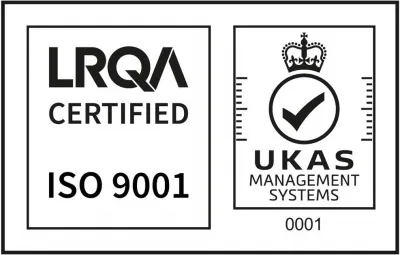
- © 2025 Nufox. All rights reserved |
- Terms & Conditions |
- Privacy Policy |
- Download ISO Certificate | Web Design MadeByShape
